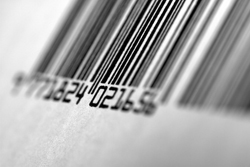Barcodes, RFID tags, and QR codes have introduced a new era of on-product information. With many technological solutions and data points in the journey of clothes, should traceability be the norm already? By Pamela Ravasio, CSR and sustainability manager with the European Outdoor Group (EOG).
Many brands and manufacturers are already reliant on digital solutions which could be leveraged to provide increased traceability. These days most supply chain work, to some extent or other, with technical achievements such as globally unique identifiers, barcodes, RFID tags, QR codes, and the electronic exchange of data.
One industry example, the GS1 ‘Global Traceability Standard’ (GTS), is a technical approach that generates visible data for each individual step of the supply chain which could be leveraged for traceability purposes.
The technological standards that have developed from the humble barcode now cover every stage of a product’s supply chain:
- Identification: Standards for the identification of items, locations, shipments, assets that provide unique and complete information for each processing step.
- Capture: Standards for encoding and capturing data in physical data carriers such as barcodes, QR codes, RFID tags etc.
- Share: Standards for sharing and exchanging data between parties in a commonly agreed format and processes.
But how do any of these standards and data formats apply to the textile supply chain? The format of identifiers, physical data carriers, and data interchange methods, are publicly available. What is important to note is that neither barcode nor RFID tag carry the actual data. Instead, they store one of the above identifiers as access to the principle information, which is stored in a suitable IT system.
This means that in order to progress from supply chain visibility to traceability, the data captured at specific steps in the supply chain needs to be stored in a commonly agreed data exchange platform, and then linked.
The information contained in the data trail created by GTS standards is not vetted and is not interpreted. In other words: once linked, the obtained traceability chain does not remove the need for audits that work to confirm the authenticity of organic cotton or other materials.







